Organizations will work together to emphasize career opportunities in the trades Reliance Worldwide Corporation (RWC), a leading manufacturer of premium branded push-to-connect plumbing products, valves, secondary pipe supports, firestopping solutions and fluid control technologies, is partnering with Home Builders Institute (HBI), a national leader in career training for the building and construction industry, as the exclusive Trade Read more
RWC
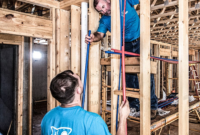
Organizations will work together to emphasize career opportunities in the trades
Reliance Worldwide Corporation (RWC), a leading manufacturer of premium branded push-to-connect plumbing products, valves, secondary pipe supports, firestopping solutions and fluid control technologies, is partnering with Home Builders Institute (HBI), a national leader in career training for the building and construction industry, as the exclusive Trade Sponsor for its 22 plumbing programs across the U.S., primarily serving Job Corps students and justice-involved individuals.
These HBI programs provide students with the skills, experience and placement services they need to have a successful career while helping the trade address labor shortages.
“We are thrilled to engage with HBI and believe this is the beginning of an important, long-lasting partnership,” said Chris Carrier, Marketing Director, Americas at RWC. “HBI’s ability to connect, train and place potential new talent into the trade makes them an ideal partner. Not only do we see this as an opportunity to help our trade, but also an opportunity to help the local communities that these programs are in.”
This partnership was a natural opportunity for RWC to double down on its commitment to promote and further the plumbing trade after its Careers in Construction Month efforts, through its SharkBite® and HoldRite® brands, in October.
“Our diverse product portfolio enables us to produce solutions that are designed to help plumbing contractors work more efficiently in the field,” Carrier continued. “In our conversations with them, we’ve recognized the need to help the trade address its labor challenge.”
HBI’s programs help approximately 10,000 students each year receive real life, hands-on training and find meaningful careers in the trades. HBI also provides them with job placement and transition assistance, and qualified graduates are able to enter advanced training programs to expand their education and experience.
“Home Builders Institute is proud to welcome our new partner, Reliance Worldwide Corporation,” said HBI President and CEO Ed Brady. “Together, we are training the next generation of skilled labor for the building industry. As HBI’s exclusive Trade Sponsor of our plumbing programs, RWC will provide its excellent products to help train our students in 22 locations nationwide. In the process, they will develop customers for life as our graduates enter the industry. I look forward to working with RWC and to seeing how the many resources they bring to the table will help enhance our training programs and ensure the future success of our students.”
To further discuss this partnership during IBSx – the 2021 International Builders Show – please visit RWC or HBI’s exhibits. Learn more about RWC and its family of brands.
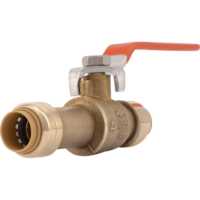
As the deep winter freeze arrives, frozen or burst pipes can become prevalent. Dealing with an unexpected leak is the last thing anyone wants to tackle in the middle of a busy season; but if it happens, there’s a quick solution to restoring ruptured pipes with no specialty tools, soldering, crimping or glue required: SharkBite push-to-connect Read more
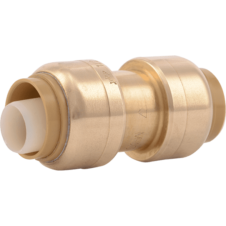 As the deep winter freeze arrives, frozen or burst pipes can become prevalent. Dealing with an unexpected leak is the last thing anyone wants to tackle in the middle of a busy season; but if it happens, there’s a quick solution to restoring ruptured pipes with no specialty tools, soldering, crimping or glue required: SharkBite push-to-connect slip and transition fittings.
As the deep winter freeze arrives, frozen or burst pipes can become prevalent. Dealing with an unexpected leak is the last thing anyone wants to tackle in the middle of a busy season; but if it happens, there’s a quick solution to restoring ruptured pipes with no specialty tools, soldering, crimping or glue required: SharkBite push-to-connect slip and transition fittings.
“SharkBite gives you a wide range of slip fittings and valves to repair burst copper or CPVC pipes quickly,” said Michael Kornegay, SharkBite Product Manager. “Up to two inches of damaged pipe can be removed using a single fitting, even in wet lines, and a drain valve can be easily added to prevent future freezing.”
Ideal for working with multiple pipe types and in tight spaces, SharkBite’s Brass Push transition fittings can be installed in wet lines and can transition between pipe types, including PEX, copper, CPVC, PVC, polybutylene, HDPE and PE-RT pipes, making them one of the most versatile solutions.
“SharkBite’s push-to-connect transition fittings come with color-coordinated collars for each specific pipe material,” Kornegay continued. “The tool-free transition fittings allow for quick and easy repair of copper pinhole leaks and replacement of brittle polybutylene pipe or broken CPVC.”
Since pipes are at a higher risk of freezing and bursting in the winter, it pays to have a solution like SharkBite’s push-to-connect slip and transition fittings handy for a quick fix. Follow these steps to get the job done fast:
- Cut the pipe cleanly – Be sure the pipe is clean of scratches or debris. If working with copper pipe, use a deburr tool or sandpaper to remove any sharp edges or burrs.
- Measure and mark the insertion depth – Use SharkBite’s Deburr & Gauge Tool to mark the insertion depth on the damaged pipe.
- Make the connection – Push the fitting to the insertion marks. Then, turn on the water and check the connection.
When it comes to repairing a burst, frozen pipe, SharkBite push-to-connect slip and transition fittings save time. Pipe transitions make working with PEX, copper, CPVC, PVC, polybutylene, HDPE and PE-RT pipes hassle free, and SharkBite offers the flexibility of repairing the damaged pipe in wet lines under full flow.
“Just cut, push and done,” Kornegay said. “These SharkBite products allow you to quickly repair those frozen, burst pipes in a short amount of time, so you can finish a job with ease and move on to the next.”
Learn more about SharkBite’s repair options at SharkBite.com.
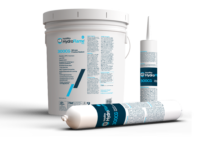
With the acquisition of HoldRite in 2017, RWC knew it had gained something special. Well-known and respected for its firestopping solutions, HoldRite continued to lead brand and category growth through product innovation well after the acquisition. And after the successful introduction of the first iteration of HoldRite firestop sealants in 2019, RWC is now offering Read more
With the acquisition of HoldRite in 2017, RWC knew it had gained something special. Well-known and respected for its firestopping solutions, HoldRite continued to lead brand and category growth through product innovation well after the acquisition.
And after the successful introduction of the first iteration of HoldRite firestop sealants in 2019, RWC is now offering an even more robust solution with the launch of the HydroFlame 300 self-leveling (HF300SL) and HydroFlame 300 caulk-grade (HF300CG) silicone firestop sealants.
First launched in June 2020, the HF300SL and HF300CG are moisture-resistant silicone fire sealants designed for areas subjected to high levels of moisture or when UL listed W ratings are required. As quick curing silicone sealants, they can also be used across a variety of pipe types. The self-leveling HF300SL is designed for floor applications, while the HF300CG is a caulk-grade sealant designed for use on both floor and wall penetrations.
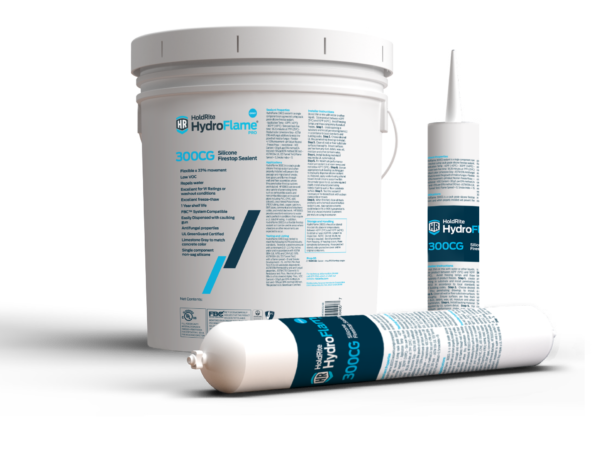
“The new iterations of our firestop sealants will provide contractors a solution that is both excellent for W ratings and washout conditions while also developing new efficiencies,” said Jeff Hamilton, firestop product manager at RWC. “HF300SL and HF300CG will simplify installation and create new standards to elevate contractors’ businesses, especially where W-rated sealants are needed.”
RWC pursues supreme quality through each product design. With continued investment in firestopping solutions, the manufacturer is continuing to lead one of the most innovative and transformative segments in the market.
The new silicone sealants are just one part of HoldRite’s proven system of firestopping solutions. Customers have come to understand the value and advantages of using HoldRite’s HydroFlame products for firestopping needs, and when they express the need for additional solutions, RWC listens.
“We are in the field and partner with customers to ensure we hear feedback first-hand. We take those inputs to our team to help inform product improvements and innovation,” Hamilton continued. “By listening to feedback, we are evolving how and what we create to make efforts more efficient and cost effective.”

Some brands become so popular people begin to refer to all products in the category by that name, such as Kleenex or Band-Aid. Similarly, push-to-connect fittings weren’t quite as popular as they are today until Reliance Worldwide Corporation (RWC) introduced them to the U.S. market nearly 20 years ago. It revolutionized the category and made Read more
Some brands become so popular people begin to refer to all products in the category by that name, such as Kleenex or Band-Aid.
Similarly, push-to-connect fittings weren’t quite as popular as they are today until Reliance Worldwide Corporation (RWC) introduced them to the U.S. market nearly 20 years ago. It revolutionized the category and made the work of contractors and plumbers quicker, more efficient and more reliable. Now, SharkBite brass push fittings are the industry standard for push-to-connect plumbing— so much so that some people refer to fittings from other brands as SharkBite.
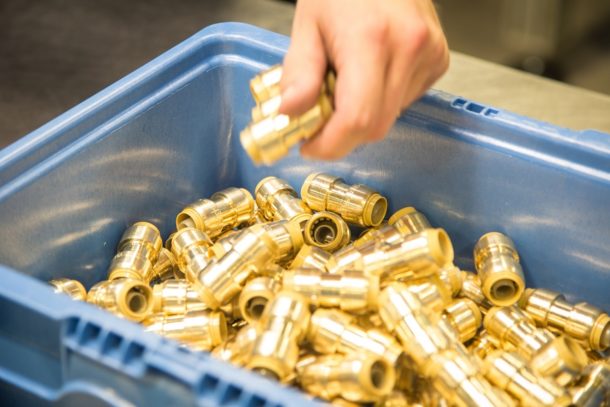
SharkBite’s Journey to the U.S.
After seeing the success of its push-to-connect fittings in Australia, water control and plumbing solutions manufacturer RWC introduced the fittings in the U.S. market as the SharkBite push-to-connect plumbing system in 2004. Today, SharkBite has become so popular that it is estimated a fitting connection is made every 2.5 seconds, according to the manufacturer’s data.
Fittings That Pushed the Boundaries of Plumbing Tech
Before push-to-connect technology, plumbers could only rely on soldering, gluing or using a specialized tool to connect pipes. These methods are sufficient in some cases but can be challenging when transitioning between different pipe types or installing in tight spaces.
To address these issues, SharkBite designed its push-to-connect fittings to connect different pipe types such as PEX, copper, CPVC, PE-RT and HDPE in tight spaces without special tools, crimps, glue or soldering.
Further Advancing Push-to-connect Technology
With SharkBite’s success, especially as a solution for emergency repairs and pipe transitions, RWC continued to build upon its innovations in push-to-connect technology:
- SharkBite introduced its own brand of durable yet flexible PEX pipe into North America. The pipe enables quicker leak repairs compared to rigid copper pipe and is often quicker to install in tight spaces.
- The company launched 1-1/4 in., 1-1/2 in. and 2 in. SharkBite fittings, which gives contractors who work on commercial projects the ability to work quicker using push-to-connect technology.
- SharkBite launched EvoPEX fittings. The groundbreaking PEX-only fitting system for meter-to-fixture installation allows for faster and more reliable installations on new construction jobsites.
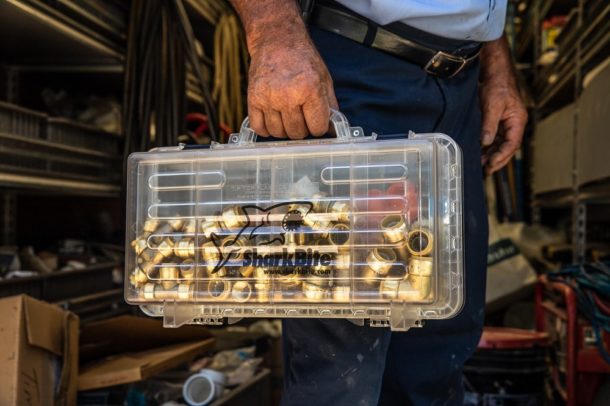
A Connection You Can Trust
Plumbers can trust the secure fit of a push-to-connect fitting thanks to its tight-sealing o-ring, pipe-locking stainless steel grab ring and corrosion-resistant brass body. All of its parts work together to make a 3-second connection long-lasting, and the fittings require no tools, can be connected in wet lines and are compatible with multiple types of pipe.
SharkBite’s Legacy
Every new product SharkBite introduces is created to empower contractors to work smarter, not harder. By reducing installation times, SharkBite gives contractors time back that they can spend on parts of their job that require more resources, like growing their business and investing in their workforce.
 Michael Kornegay is the SharkBite product manager at RWC — a market leader and manufacturer of water control systems and plumbing solutions for residential, commercial and industrial applications.
Michael Kornegay is the SharkBite product manager at RWC — a market leader and manufacturer of water control systems and plumbing solutions for residential, commercial and industrial applications.

As a homeowner, I know firsthand the fear of experiencing water damage in the place I find the most comfort. But as someone who works in the plumbing technology industry, I know there is a way to receive alerts the moment a pipe bursts or an appliance fails so I can call my plumber before Read more
As a homeowner, I know firsthand the fear of experiencing water damage in the place I find the most comfort. But as someone who works in the plumbing technology industry, I know there is a way to receive alerts the moment a pipe bursts or an appliance fails so I can call my plumber before irreversible damage occurs.
Certainly, you’ve done your fair share of leak repairs as a contractor. They’re so common that Chubb reported 45% of homeowners have experienced a water leak or know someone who has, and, according to the Insurance Information Institute, water damage insurance claims are 3 times more likely than theft and fire claims combined. And with nearly every burst pipe or fixture leak, there’s a frantic call to a local plumber for an emergency repair.
Fortunately, Chubb also found that 93% of all water damage can be prevented, and there’s technology that helps protect your customers against these costly and devastating leaks. Recommending and installing this technology for your customers can help position you as a hero.

Smart Leak Detection Devices: What Are They?
Most leak detectors today are Wi-Fi connected smart home units that track water activity in the home and alert users to potential leaks.
Some devices take leak detection a step further to offer complete protection by:
- Tracking water throughout the home through the main water line.
- Monitoring conditions that lead to plumbing system issues such as freezing temperatures, high and low pressure, and excessive humidity.
- Offering a mode that automatically shuts the water off if a leak is detected while the homeowner is away.
- Alerting users of abnormal water usage while they’re at home.
- Detecting slow drips behind the wall, via a pressure decay test, which can cause mold and property damage if left untreated.
- Integrating with smart home technology such as Google Assistant or Amazon Alexa to make leak detection more convenient.
- Providing the ability to control multiple devices across multiple properties, such as a second home or vacation property, in one app.
Smart home leak detection devices are a must-have for homeowners who want to protect their investment and avoid high water remediation and property replacement costs. And you can be the one to present the solution to them.
Offering Leak Detection Installation Services
Why offer leak detection installation services to your customers? You will add value to your customer and your business with a product every home should have — just like smoke and security alarms. This gives your customers peace of mind, as they know you’re using advanced solutions to keep them protected. You will also build a trusting relationship for callbacks if the device does detect a leak or pressure issue that requires a professional.
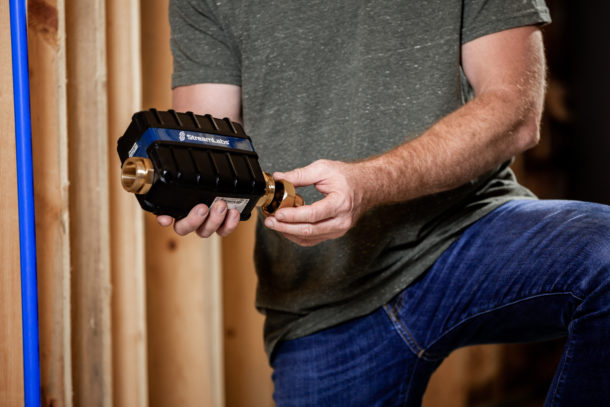
Additionally, if customers with installed leak detectors do experience a leak, they can turn off their water before you arrive so you don’t have to find the main water line, turn the water off and trudge through water to get to the leaking pipe. The result is quicker repairs for you and less frustration for them.
Plus, you will save your customers money on water remediation and property restoration services by installing a device that helps protect them against catastrophic leaks and costly water bills.
Building Awareness About Your New Services
Once you decide to offer leak detection device installation as a service, you’ll want to tell your existing and potential customers. Consider these tactics for letting customers know about your new services:
- Promote it online and in-person. Share more about your new offerings through social media, email and in-home sales pitches. Around the holidays, you may even consider promoting a customer referral program where people can get and give a discount on their leak detection device installation.
- Educate customers on leak detection. In your communications about the new leak detection service, include the frequency and cost of leaks and appliance failures. You may also mention the likelihood of another leak happening after the first one, which is 2 to 3.5 times more likely, according to data from American International Group. If the customer’s home contains an older plumbing system or they’re in a part of the country that’s susceptible to freezing temperatures, you may use this to give them a sense of urgency about installing a leak detection system.
- Show, don’t just tell. While most homeowners are aware that leaks can happen any time, they may not realize they can do something to help prevent them. Show videos of how leak detection devices work, and keep a device in your truck in case they want to see what the device looks like in person.
- Emphasize the peace of mind. Unfortunately, homeowners can’t always see the effects of a leak until it has caused permanent damage. Explain that a leak detection device can calm their fears about water damage while they’re home or away at work or on vacation.
- Don’t forget multiple property owners. Have clients that own or manage multiple properties? Emphasize the importance of protecting second homes, vacation rentals, investment properties and aging parents’ homes with smart leak detectors that they can control from one app.
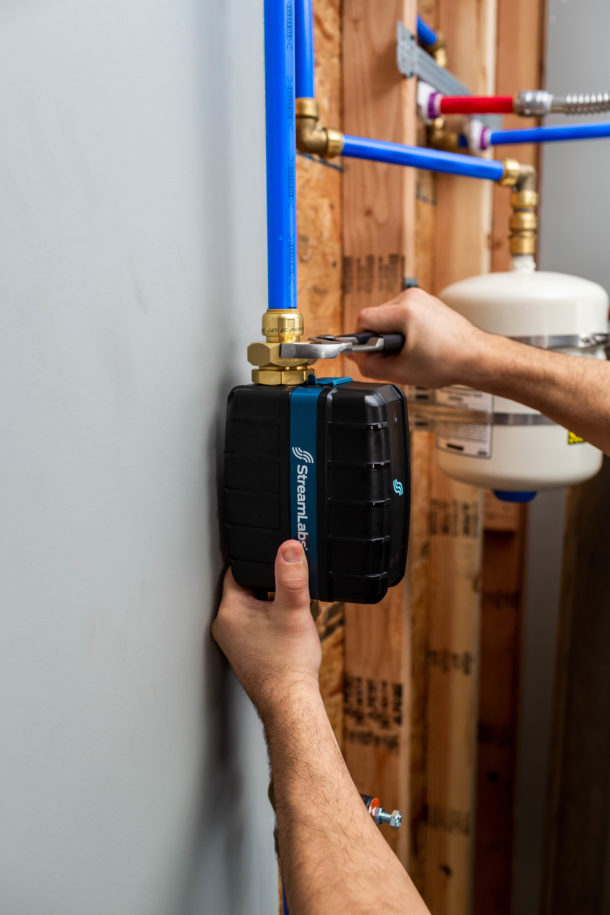
Finding the Right Leak Detection Solution
Your customers need protection against water leaks, and you can be the one to educate them and provide the solution. Learn more about the benefits of offering leak detection services by exploring an installer program, such as StreamLabs, today.
 Cindy Welsh is a sales director at RWC – a market leader and manufacturer of water control systems and plumbing solutions for residential and commercial applications.
Cindy Welsh is a sales director at RWC – a market leader and manufacturer of water control systems and plumbing solutions for residential and commercial applications.
